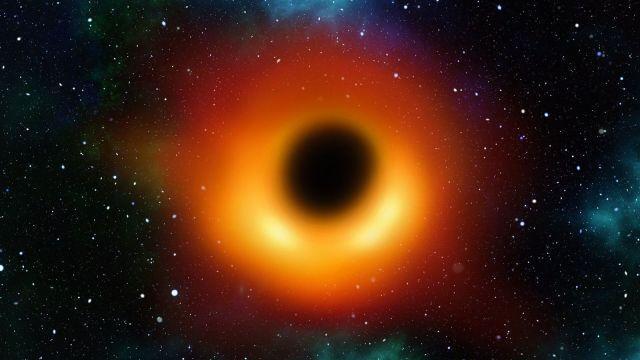
Supermassive Black Hole Wakes Up After 20 Years of Inactivity
In a groundbreaking discovery, scientists have detected a supermassive black hole that has awakened from a 20-year slumber. Located in the SDSS1335+0728 galaxy in the Virgo constellation, the massive black hole was previously thought to be inactive, but recent observations have revealed that it is now spewing out bursts of X-rays, signaling its return to activity.
The discovery was made by the Zwicky Transient Facility (ZTF), a survey telescope located at Caltech’s Palomar Observatory in California. The ZTF is designed to detect and study transient events in the universe, such as supernovae, gamma-ray bursts, and other explosive phenomena.
According to a report by scientists from the Harvard-Smithsonian Center for Astrophysics, the black hole was first detected in 2000, but it had been dormant ever since. However, last year, Chilean astronomers noticed that it was exhibiting unusual activity, emitting bursts of X-rays that suggested it was waking up.
The SDSS1335+0728 galaxy is located about 600 million light-years away from Earth, which means that the light we see from it today has been traveling through space for nearly 20 years. During this time, the black hole was likely in a state of dormancy, with no significant activity occurring.
But now, it seems that the black hole has woken up, and scientists are eager to learn more about its newfound activity. The ZTF has been monitoring the galaxy closely, and scientists have detected a number of X-ray bursts emanating from the black hole.
“These X-ray bursts are a sign that the black hole is actively accreting material, which is a key indicator of its activity,” said Dr. S. Avadhuta, a researcher at the Harvard-Smithsonian Center for Astrophysics. “We’re excited to learn more about this event and what it might mean for our understanding of black hole behavior.”
Supermassive black holes are found at the centers of many galaxies, including our own Milky Way. They are characterized by their massive size, with some having masses equivalent to millions or even billions of times that of the sun. These black holes are thought to play a crucial role in the evolution of galaxies, and their activity can have a significant impact on the surrounding environment.
The discovery of this active black hole is significant not only because it provides new insights into the behavior of supermassive black holes but also because it offers a unique opportunity to study the phenomenon in detail. By monitoring the black hole’s activity, scientists can learn more about the processes that occur around it, including the flow of hot gas and the formation of stars.
The ZTF is designed to detect and study transient events like this, and its observations have provided scientists with a wealth of new data to analyze. The survey telescope is capable of monitoring the entire sky every few nights, making it an ideal tool for detecting sudden changes in celestial objects.
The discovery of this active black hole is also a reminder of the importance of continued investment in astronomical research. By studying the universe in detail, scientists can gain a better understanding of the complex phenomena that occur within it, and this knowledge can have significant implications for our understanding of the cosmos.
In conclusion, the detection of a supermassive black hole that has woken up after 20 years of inactivity is a significant discovery that provides new insights into the behavior of these massive objects. The ZTF has made it possible for scientists to study this phenomenon in detail, and further observations will likely reveal more about the processes that occur around the black hole. As we continue to explore the universe, we may uncover even more surprises that challenge our understanding of the cosmos.
News Source:






